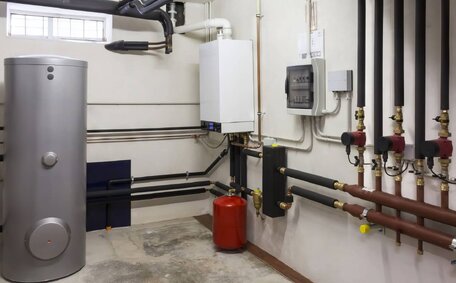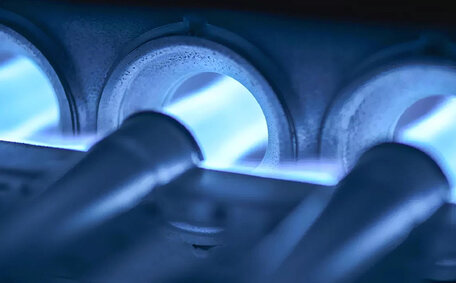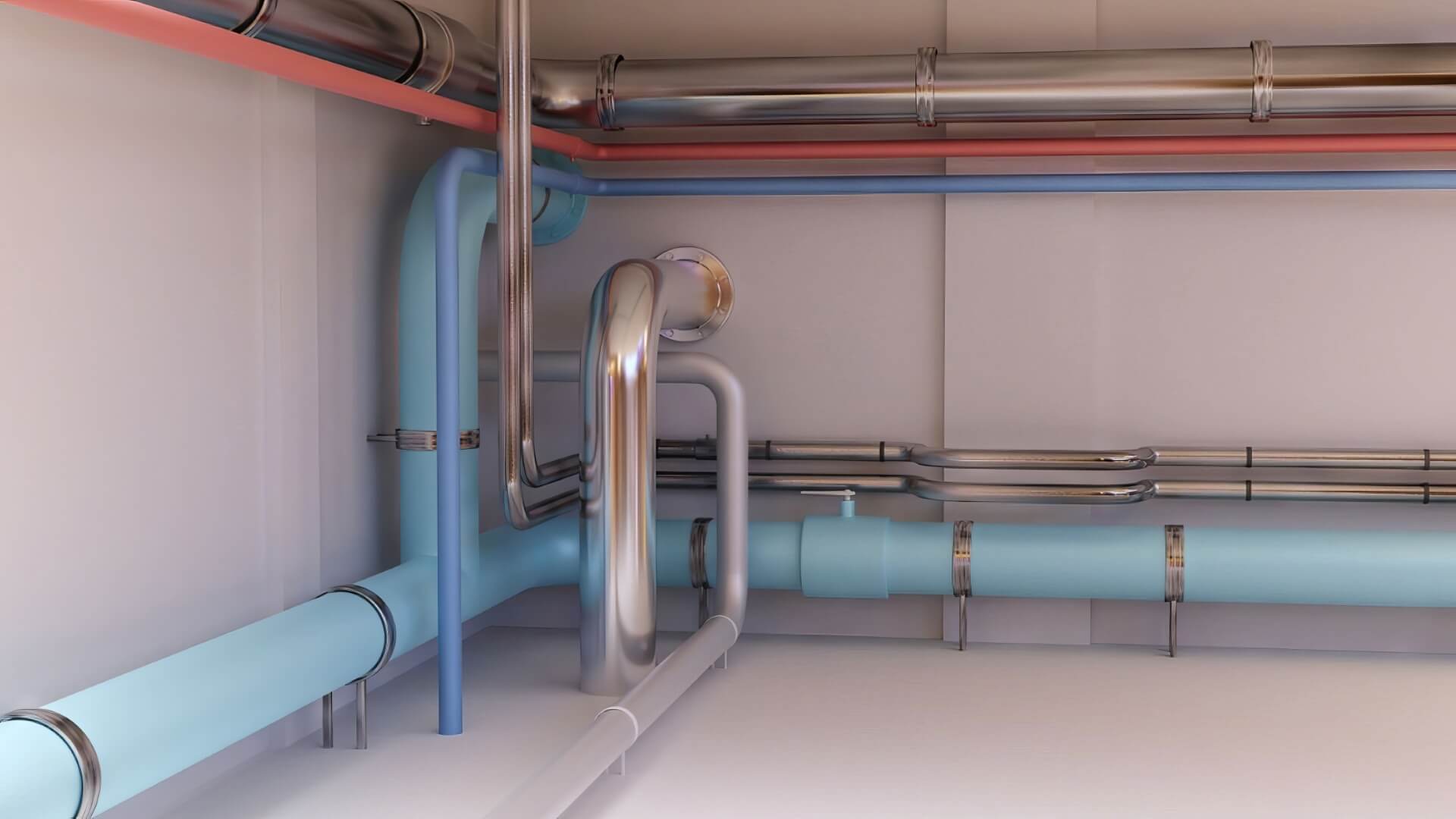Understanding Gas Pipe Relining
Pipe relining, crucial to maintain your water and gas systems, is a technique that plumbing professionals employ and can be booked with a simple call out to mend damaged or broken pipes, including those that are underground or in hard-to-reach areas.
Pipe relining is vital for maintaining an efficient, safe, and smooth-running gas system, helping to resolve and prevent future complications.
To manage issues within your pipes strategically, a liner soaked in resin is inserted into the problematic pipes to alleviate damage. Following insertion, the resin hardens, thus forming a robust inner layer within the original pipe, thereby helping to replace the damaged sections.
I was responsible for a task that was inherently vital for the continuity of the pipeline, and thankfully, there was no call-out fee for this service.
However, it’s important to note that significant damages might require alternative solutions.
Let’s discuss how the technique of pipe relining, which can save substantial time and resources as well as preserve landscaping, can provide a durable solution for damaged pipes that doesn’t necessitate comprehensive excavation.
In this article, we’ll explore pipe relining in detail - it’s process, advantages, and the common question: 'Can you reline a gas pipe?'. If you seek a seamless and cost-effective solution for repairing gas pipes, this guide is for you.
Join us on this enlightening exploration to learn more about how pipe relining can enhance the lifespan of your plumbing and gas system.
What is Pipe Relining?
Pipe relining is an innovative plumbing technique that focuses on repairing and restoring existing pipes, notably those located underground or in hard-to-reach areas, such as train lines and busy roads.
This method provides a dependable solution that can effectively rectify damaged drain, sewer, and particularly gas pipes, improving their resilience and performance.
To know about pipe relining, understand that the process involves the placement of a pipe liner, infused with resin, into the old pipe or damaged pipe, addressing the damage.
This new pipe, often made of materials such as cast iron, acts as a protective layer that is more resistant to future damage to its structure like leaks, tree root invasions, and corrosion.
Then, heat or UV light is used to cure the resin, making it harden to produce a new pipe within the existing one.
- The rigidity and strength of a new pipe
- The smoothness to increase flow capacity
- The durability to withstand harsh conditions
- The capability to prevent root intrusions
In contrast to pipe relining, traditional pipe repair often requires extensive excavation – including disrupting lawns, driveways, and occasionally even interior floors to gain access to and replace the faulty pipe.
No matter whether the pipe is old or recently installed, it’s time to consider a method which, while possibly labour-intensive and time-consuming, doesn’t become a costly and disruptive ordeal for property owners.
However, with the advent of pipe relining, there’s no need to dig up large areas when we manage the procedure. Additionally, because the relining operation takes place within the pipe, it generally necessitates merely a single point of entry.
This method not only minimises the physical disruption to your landscaping but also eliminates the generation of surplus waste materials, making it a more environmentally-friendly approach to maintaining your piping systems.
It’s worth noting that pipe relining offers a multitude of benefits including cost-effectiveness, high efficiency, and long-lasting results, making it an attractive alternative for both conventional plumbing and especially for gas line repairs.
What is the pipe relining process?
The process of pipe relining may appear intricate at first glance but, in essence, it consists of a systematic sequence of steps, ensuring each damaged pipe is comprehensively repaired, and that relining can extend the pipe’s lifetime significantly. Here is a simplified breakdown of the operation:
- Inspection – The initial phase of the process necessitates a thorough evaluation of the existing pipe system. Professional plumbing specialists use advanced CCTV camera technology to carry out this inspection, scrutinising the pipe’s interior for obstructions, damage spots, and pipe structure integrity. The data captured and compiled during this stage forms the blueprint for the ensuing pipe relining task.
- Preparation – After identifying the issue and precisely locating the damaged section, the next step revolves around preparing the pipe for relining. This involves the use of high-powered water jets – the hot water system – to thoroughly clean the pipe and eliminate any residual waste, debris, or tree roots.
- Pipe Lining Infusion – As soon as the damaged pipe is clean and ready, it’s time for the liner to make its entry. This particular liner is not just a conventional inner tube but one that is saturatively impregnated with a specially designed epoxy resin. The resin matured liner – flexible yet resilient – is carefully manoeuvred into the damaged pipe, ensuring it completely aligns with the internal wall of the pipe.
- Setting & Curing – Once the liner is suitably positioned within the pipe, the curing phase commences. This step includes inflating the liner using an inversion drum or air pressure, consequently enabling the epoxy resin to bond with the existing pipe. In due course, the resin hardens, essentially forming a ‘pipe within a pipe’. Depending primarily on the type of resin used and the prevailing environmental conditions, curing can take from a few hours to a full day.
- Final Verification – At this juncture, another round of CCTV inspection follows. It ascertains that the new pipe has bonded appropriately with the old one and that the procedure progressed as planned. The verification validates that the relining process has been successful and the pipework can return to normal.
The comprehensive process of pipe relining ensures the effortless restoration of the pipe system’s performance, making it an ideal solution for both daily plumbing scenarios and urgent gas line repairs.
This advanced technique not only minimises inconvenience but also maximises efficiency, contributing to the overall sustainability and sophistication of the plumbing domain.
Who Has the Expertise to Undertake Pipe Relining?
The technique of trenchless pipe relining, albeit innovative and highly beneficial, requires a specific level of expertise and a unique set of tools. Relining your plumbing system necessitates the involvement of professionals who have undergone intensive training and possess experience in dealing with different pipe systems and corresponding challenges.
Our dedicated plumbing experts are highly skilled and we recommend them for the job.
Not every plumber or local handyman is able to perform this critical operation, and it is crucial to partner with professionals before entrusting them to work on your pipes.
Before choosing your plumber or a plumbing company, it is crucial to ensure they not only offer pipe relining services that can help minimise damage to your system as one of their plumbing services but also hold a solid track record for the same.
The capacity to provide high-quality relining services signifies a company’s dedication towards embracing innovative technologies and serves as evidence of their commitment to offering top-notch solutions to their clients.
Pipe relining, a detailed process often initiated due to leak detection, includes numerous meticulous tasks. For such services, we offer procedures such as CCTV utilisation for diagnosis, high-pressure water jets for cleaning, cautious insertion of the liner, and vigilant oversight of the curing process—each demanding a significant level of proficiency.
Therefore, when deciding whether a pipe needs repair or relining, it’s essential to seek professionals with substantial experience and detailed know-how.
Although pipe relining is a specialised service in Sydney, not all plumbing companies possess the necessary resources or capabilities to include solutions such as saertex multicom pipe relining in their suite of services.
It might not be the go-to solution for some due to the investment in advanced technology and ongoing training that it requires. Therefore, the provision of this service by a plumbing company is often an encouraging indication of their adaptability, competence, and professionalism.
These guys at Bossley Park Plumbing, we harbour a team of experienced professionals who are well-equipped and fully trained to handle pipe relining tasks, accomplishing them with utmost perfection.
We can take immense pride in our team’s ability to fix both customary and extraordinary plumbing problems by harnessing cutting-edge technology and proven methodologies. From handling complex operations like pipe relining to tackling everyday plumbing issues, we’re here to help.
With us, you can rest assured about the safety, efficiency, and longevity of your pipe systems, thanks to our relentless commitment to delivering quality service and attaining client satisfaction.
We believe in the power of technology and the value of skill, thereby making sure to deliver quality work that redefine what excellent plumbing service looks like.
So, if you’re contemplating who is able to reline your pipes, look no further – we are ready to assist.
What are the pros and cons of pipe relining?
Pros and Cons of Pipe Relining
Pipe relining, like other plumbing methods, comes with its own advantages and disadvantages. By understanding these, you’ll be able to make knowledgeable decisions about the functionality and lifespan of your pipes. We’ve curated a comprehensive guide to these aspects below:
The Benefits of Pipe Relining:
- Cost-effectiveness: Compared to traditional pipe replacement, the cost of relining can often prove to be more economical. This stems from the fact that pipe relining negates the need for extensive excavation and replacement of large sections of pipe, saving on both material and labour costs.
- TIme-efficient: Pipe relining usually requires a considerably shorter timeline compared to traditional methods of pipe repair. The need for excavation and subsequent restoration is eliminated, thus resulting in faster project completion.
- Less Disruptive: Undoubtedly, one of the foremost merits of pipe relining is its minimal disturbance factor. Given that most work occurs within the pipe, there’s limited disruption to your property, cherished landscapes, or routine life.
- Durability: Pipe relining delivers a robust and long-lasting solution, making the pipe more resistant to root penetration, leaks, and corrosion. This results in extended pipe lifespan.
- Property Value: Pipe relining can significantly enhance the value of your property. An updated, efficient plumbing system is deemed an excellent selling point for potential buyers.
DisThe Benefits of Pipe Relining:
- Not suited for all pipes: Although pipe relining is an excellent solution for many damaged pipes, it may not be suitable in some cases. For instance, pipes with significant structural irregularities or severe breaks might not be viable candidates for pipe relining.
- Missed Connections: In certain scenarios, pipe relining might overlook or miss connecting laterals or junctions. Therefore, a thorough inspection and accurate mapping of the existing pipe system is imperative prior to the procedure.
- Specialist Knowledge Required: Pipe relining requires tactical expertise and the appropriate equipment, which not all plumbers possess. Hence, finding a reliable and expert professional experienced in pipe relining can sometimes be challenging.
As mentioned, both advantages and disadvantages need to be critically evaluated while deciding whether to line pipes using the pipe relining method.
We, at your Sydney service Bossley Park Plumbing, vouch for our pipe relining service alongside our detailed consultation and proficient plumbing services, ensuring you make the best decisions for your plumbing infrastructure.
Whether you need pipe relining or a traditional pipe replacement, we’re here to cater to your unique needs with top-notch solutions.






